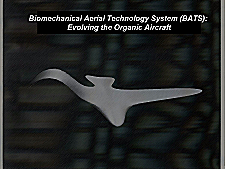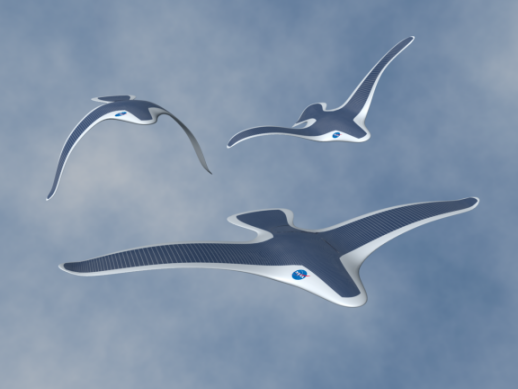![]() Biomechanical Aerial Technology System (BATS): Evolving the Organic Aircraft
Biomechanical Aerial Technology System (BATS): Evolving the Organic Aircraft
 |
|
NASA Langley's BATS Program |
The BATS program is a NASA Langley research program, with whom Morpheus Lab is partnered. The effort aims to develop the first vehicle that, like biological organisms, is constructed entirely of distributed systems. The organic ornithopter will be a vehicle comprised of integrated and distributed layers of active materials (i.e. muscles), distributed sensing films (i.e. nerves), and a distributed energy storage and delivery system. This will be similar to how biological organisms have fully integrated distributed functional systems. The vehicle wil fly autonomously, requiring senses and intelligent algorithms for control.
This ambitious research program aims to demonstrate the feasibility of organic aircraft design and construction, which we hope will one day revolutionize the aircraft and robotics industries. The project focuses on three main technical challenges: 1) materials development and integration, 2) actuation and control, and 3) intelligence.
Morpheus Lab brings its expertise in aerodynamic modeling, design, and flight testing of flapping wing vehicles in addition to its expertise in modeling and designing distributed parameter systems such as distributed sensors and actuators.

Intelligent Organic Aircraft
![]()

